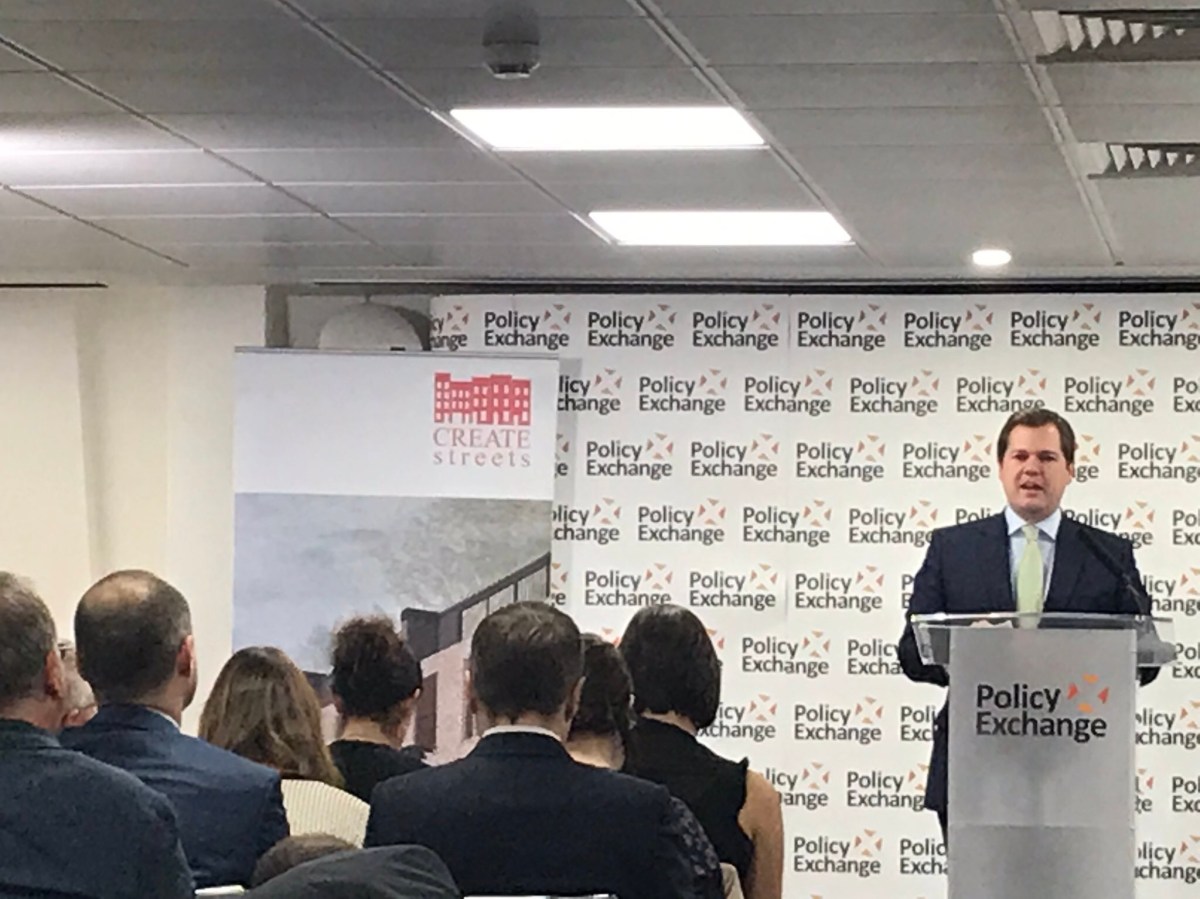We’re hosting a workshop for London First this week, as part of its London’s Transforming High Streets programme.
Usual mistake of agreeing to say a few words and then reading what it’s about:
“The aim of the workshop is to bring together London First members and stakeholders to investigate the barriers to town centre transformation thrown up by the licensing system, and whether there is a disconnect between the places envisioned by the planning system and the permissions given to operators through licensing. Too often we hear examples of businesses trying to create the kind of vibrant live-work-eat-play, 24h places that consumers increasingly demand, only to be actively shut down through licensing. Or developers berated for not incorporating bold design into their regeneration plans, knowing full well the suggested outdoor spaces would never get permission to be used for anything mildly interesting. Are there good examples of where licensing is actively enabling change and growth, and how can we make sure this becomes standard practice to support our a fast-changing retail and hospitality sector?”
This is all close to my heart. Opportunities for socialising and cultural activity, theatres, live music, all make London what it is. I walked through the latest phase of Argent’s Kings Cross development last night, the area already buzzing with people enjoying the spaces and venues. And, whilst some change is always inevitable, even more important are London’s existing pubs and venues, under threat by any combination of the five Rs: rents, rates, regulation, residents and redevelopment.
But I realised how much a planning lawyer like me operates in a professional silo, trained to think of the statutory regimes for alcohol and entertainment licensing, just like Building Regulations, as “not planning law”.
Which is a bit odd.
If town and city centres are to retain their central economic and social role they have to be about more than working and shopping. And that needs legislation and policy to be focused on common objectives.
See this BBC piece The growing importance of the night-time economy (17 November 2019). The “live music” sector alone made a contribution of £1.1 billion to the UK economy in 2018, according to UK Music’s Music By Numbers 2019 (20 November 2019).
I can only talk first hand about London.
When becoming London Mayor in May 2016, one of Sadiq Khan’s early steps was to appoint Amy Lamé as London’s “night czar”. Aside from presenting her excellent Sunday afternoon BBC6 Music show (at a time when even I am still awake), she has played an active role in encouraging all aspects of London’s night time economy and the Mayor has made steady progress, including on TfL’s important night tube strategy. Could more have been done? I would be interested to hear views.
As announced in the Mayor’s 31 January 2019 press release London’s night-time economy can help save the high street, London’s Night Time Commission published its report Think Night: London’s Neighbourhoods from 6pm to 6 am with its ten recommendations:
“RECOMMENDATION 1: The Mayor should put the night at the heart of London policy- making. He should introduce a Night Test for all new policies to rate their impact on London’s culture, sociability, wellbeing and economy at night.
RECOMMENDATION 2: The Mayor should produce Night Time Guidance for boroughs. This will help them develop holistic Night Time Strategies that go beyond the night time economy and cover all aspect of their town centres and other areas between 6pm and 6am.
RECOMMENDATION 3: The Mayor should set up a London Night Time Data Observatory. This central hub of data on the economy, transport, licensing, infrastructure, safety and health would help boroughs create their Night Time Strategies and inform local decision making
RECOMMENDATION 4: The Mayor should publish an annual report on London at Night. It should include a series of night time metrics that show his progress in implementing the Night Time Commission’s recommendations and achieving the ambitions of his 24-Hour City Vision
RECOMMENDATION 5: The Mayor should establish a Night Time Enterprise Zone fund that boroughs can bid into, starting with a Pathfinder Zone in 2020
RECOMMENDATION 6: The Mayor should carry out research to establish the case for longer opening hours across London
RECOMMENDATION 7: The Mayor, should help establish new partnerships across the capital to improve safety, reduce violence and make London welcoming for everyone at night
RECOMMENDATION 8: The Mayor should develop guidance to help boroughs, landowners and developers create welcoming, safe and vibrant public spaces at night
RECOMMENDATION 9: The Mayor should set up a Late Night Transport Working Group to ensure that workers, visitors and customers can get around London quickly and safely at night. The group should consider extending night services, introducing a ‘Night Rider’ fare that allows workers to move between bus, tube, train, DLR or tram in a single fare, and encourage more use of TfL’s land and buildings at night
RECOMMENDATION 10: The Mayor should extend the remit of London & Partners so that they can promote London’s night time offer to Londoners
The Mayor’s responses to the recommendations have included:
“• The Night Czar convening a quarterly 24-hour London delivery group at City Hall to assess the impact of policies on London at night
• The Night Czar and Night Time Borough Champions Network working together to produce guidance for boroughs to develop night-time strategies
• Creating a Night Time Data Observatory to build a full picture of the capital at night
• Reporting progress on the Commission’s recommendations as part of the Mayor’s Annual Report
• Creating a Night Time Enterprise Zone pilot scheme to help a borough develop its night-time offer
• Conducting research into the benefits of longer opening hours across London
• Championing partnerships across the capital that support the night-time economy and investing in the creation of the Safer Sounds Partnership
• Including guidance on improving public spaces at night as part of the work to develop borough night-time strategies
• Establishing a Late-Night Transport Working Group to ensure transport meets the needs of London’s night workers
• Continuing to support London & Partners in their work to promote the capital’s 24-hour tourism offer”
In June the Mayor launched a bidding process to select a pilot Night Time Enterprise Zone, as well as establishment of the Safer Sounds Partnership, led by the music industry and part of the Safer Business Network, aimed at developing better liaison between venue operators and event organisers with police and council licensing teams, together the night czar (see his 7 June 2019 press release).
On 10 September 2019, the Mayor announced that Walthamstow High Street had won the bidding process to be London’s first Night Time Enterprise Zone. According to the Mayor’s press release:
“The pilot, which runs from October to January, will see Waltham Forest try out a range of proposals for the high street, including:
• Offering entrepreneurs low-cost and flexible business spaces to hire in the evenings
• Establishing a new fund to help business and community groups host events after 6pm
• Running a ‘shop local late’ campaign
• Hosting a ‘reclaim your high street event’ with activities for all ages
• Creating a step-by-step guide for night-time businesses to help them apply for planning and licensing approval
• Encouraging late shopping with a new evening map and events listings
• Encouraging local people and night-time workers to have their say on how to make Walthamstow work better for them after 6pm.”
I would be interested to hear how all this going. There is relatively little on line – and no sign yet of the “step-by-step guide for night-time businesses to help them apply for planning and licensing approval”.
The draft London Plan has policy HC6 (“supporting the night-time economy”):
“HC6
• Boroughs should develop a vision for the night-time economy, supporting its growth and diversification, in particular within strategic areas of night-time activity (see Table A1.1 and Figure 7.7), building on the Mayor’s Vision for London as a 24-Hour City.
• In Development Plans, town centre strategies and planning decisions, boroughs should:
1. promote the night-time economy, where appropriate, particularly in the Central Activities Zone, strategic areas of night-time activity, town centres, and where public transport such as the Night Tube and Night Buses are available
2. improve inclusive access and safety, and make the public realm welcoming for all night-time economy users and workers
3. diversify the range of night-time activities, including extending the opening hours of existing daytime facilities such as shops, cafés, libraries, galleries and museums
4. address the cumulative impact of high concentrations of licensed premises and their impact on anti-social behaviour, noise pollution, health and wellbeing and other impacts for residents, and seek ways to diversify and manage these areas
5. ensure night-time economy venues are well-served with safe and convenient night-time transport
6. protect and support evening and night-time cultural venues such as pubs, night clubs, theatres, cinemas and music and other arts venues.
• Promoting management of the night-time economy through an integrated approach to planning and licensing, out-of-hours servicing and deliveries, safety and security, and environmental and cleansing services should be supported. Boroughs should work closely with stakeholders such as the police, local businesses, patrons, workers and residents”
But how effective is this in the short-term, given how long it will take for the policy to be reflected on borough plans/licensing policies, and the various planning policies at all levels (national, London-wide and borough) that point in potentially conflicting directions?
I would be interested to hear how joined up, or not, boroughs’ planning and licensing strategies are, in practice, at present. Operating hours for a development will often for instance be set down in planning conditions, only for a different set of hours to be set out in the eventual premises licence – or detailed operating strategies required which should be the domain of the licensing process.
The formal procedures and statutory criteria to be applied are certainly very different.
The Home Office’s guide to alcohol licensing under the Licensing Act 2003 covers the three types of licence required, namely
“ •any business or other organisation that sells or supplies alcohol on a permanent basis needs to apply for a premises licence
• anyone who plans to sell or supply alcohol or authorise the sale or supply of alcohol must apply for a personal licence
• qualifying members’ clubs (such as the Royal British Legion, working men’s clubs and rugby clubs) need to apply for a club premises certificate if they plan to sell or supply alcohol”
The DCMS guide to entertainment licensing, sets out the licensing process required, since the coming into force of the Live Music Act 2012, for:
• “anyone that provides any entertainment between 11PM and 8AM;
• anyone that provides amplified live or recorded music to an audience of more than 500 people;
• anyone that provides recorded music to an audience on premises not licensed for the sale or supply of alcohol;
• anyone that puts on a performance of a play or a dance to an audience of more than 500 people, or an indoor sporting event to more than 1,000 spectators
• anyone that puts on boxing or wrestling
• anyone that screens a film to an audience”
The Home Office has published guidance (April 2018) as to how licensing authorities are to discharge their functions.
There are four licensing objectives:
• The prevention of crime and disorder;
• Public safety;
• The prevention of public nuisance; and
• The protection of children from harm.
The guidance goes on to explain that “the legislation also supports a number of other key aims and purposes. These are vitally important and should be principal aims for everyone involved in licensing work. They include:
• protecting the public and local residents from crime, anti-social behaviour and noise nuisance caused by irresponsible licensed premises;
• giving the police and licensing authorities the powers they need to effectively manage and police the night-time economy and take action against those premises that are causing problems;
• recognising the important role which pubs and other licensed premises play in our local communities by minimising the regulatory burden on business, encouraging innovation and supporting responsible premises;
• providing a regulatory framework for alcohol which reflects the needs of local communities and empowers local authorities to make and enforce decisions about the most appropriate licensing strategies for their local area; and
• encouraging greater community involvement in licensing decisions and giving local residents the opportunity to have their say regarding licensing decisions that may affect them.“
Each licensing authority must publish a statement of its licensing policy at least every five years. Here, by way of example, is Camden’s statement of licensing policy 2017 – 2022, with much detail as to its expectations of operators, examples of licensing conditions for different kinds of venues and framework hours. How many of us, or our clients, get involved in this process?
Licensing applications are publicised and consultations take place with the police and other bodies. Contested applications are likely to go to a hearing before a licensing sub-committee, with appeals heard by the Magistrates’ Court.
A practitioner recently explained to me some of the differences that he sees. For instance:
⁃ a premises licence is automatically granted where there are no objections. Imagine the planning system working like that!
⁃ the grant of a premises licence is a material consideration in the determination of a planning application, but not vice versa.
⁃ there is a greater focus at premises licence hearings on evidence of actual, rather than potential, impact.
⁃ There is ongoing regulatory control as to a premises licence – not a once and for all event in the way that the grant of planning permission is.
⁃ Licensed premises form only a small part of planning officers’ workload (especially outside central London) and there can be little knowledge of the detailed ways in which the licensing regime works, often leading to a “belt and braces” approach.
Fair points?
A House of Lords Select Committee considered the operation of the 2003 Act licensing regime in an April 2017 report.
One of the Select Committee’s main areas of focus was whether the licensing and planning regimes should be better integrated:
“In our call for evidence we asked: “Should licensing policy and planning policy be integrated more closely to shape local areas and address the proliferation of licensed premises? How could it be done?” An overwhelming majority of respondents criticised the current lack of coordination between licensing and planning, and thought that there should be better integration. We were given numerous examples of the absurdities caused by the separation of the systems, especially for applicants for new premises which need permission for both planning and licensing, and for whom permission for one without the other is of no use.
This example given to us by the London Borough of Hounslow is just one illustration:
“One recent problem is a restaurant who built a structure in their garden without planning permission. Planning permission was subsequently applied for and refused. There was fierce opposition to the structure from local residents and in our view the concerns of the residents were valid. The owners have also applied for a premises licence which includes the structure. Planning could not object because the regimes are supposed to be separate and the licence was subsequently granted with restrictions. We now have a situation where the planning permission is refused and the licence is granted. Residents have commented on their confusion and the premises licence holder has received an approval and a refusal for the same structure from the same local authority.”
Their conclusion was: “The whole process is confusing for our residents and we would support a change in the position so that planning permission can be considered when determining licence applications.”
The Select Committee concluded:
“If, as we think, it is not only permissible but logical to look at licensing as an extension of the planning process, it would have been sensible for the Licensing Act to transfer the powers of licensing justices to the planning committees of local authorities, rather than set up a new and untried system of licensing committees with a new and different procedure, new staffing, and a new appellate process. Instead the result has been that each local authority has been able to deal with all aspects of land use through a planning committee with the single exception of licensed premises, which require a separate committee and a separate mechanism. Now that the system has been in operation for 11 years, we believe that this can be seen to have been a mistake and a missed opportunity.
We recognise that a suggestion that licensing committees should be abolished and their work amalgamated with that of planning committees is a radical one. It is not a change which should be made without first being trialled over a small but representative sample of local authorities over perhaps two years.”
The Government pretty much rejected the recommendation out of hand in its August 2017 response:
“While the Government rejects some recommendations and conclusions, there are several recommendations which are a spur to further work, particularly in respect to how the system of licensing can be made to function more effectively and the lessons that can be learned from the planning system.”
“We accept that improvements could be made in some local areas and that the synergies between planning and licensing should be part of an ongoing discussion about how we can support local improvements. Instead of transferring the functions of licensing committees to planning committees, we are focusing on improving training and providing stronger guidance on how licensing hearings should be conducted.
The basic structures of the planning and licensing system are similar and our focus will be on improving how the two regimes communicate and interact at local level. There is good practice in many local areas that we will disseminate and build on, for example whether there is additional support that local residents could be given to frame and present their concerns about a licensing application to the committee effectively.”
Will this separation hold firm? Is it sensible for statements of licensing policy to be prepared separately from local plans? Is it sensible for licensing and planning matters to be dealt with by different committees and sub-committees? Is this efficient and understandable both by potential users of the systems, by local authority officers and members, and by local residents? Is there another way of reconciling the desirability of encouraging the night-time economy with legitimate local concerns as to amenity?
You tell me.
Simon Ricketts, 30 November 2019
Personal views, et cetera

Detail from Port of London, Night by Maximilien Luce, 1894






